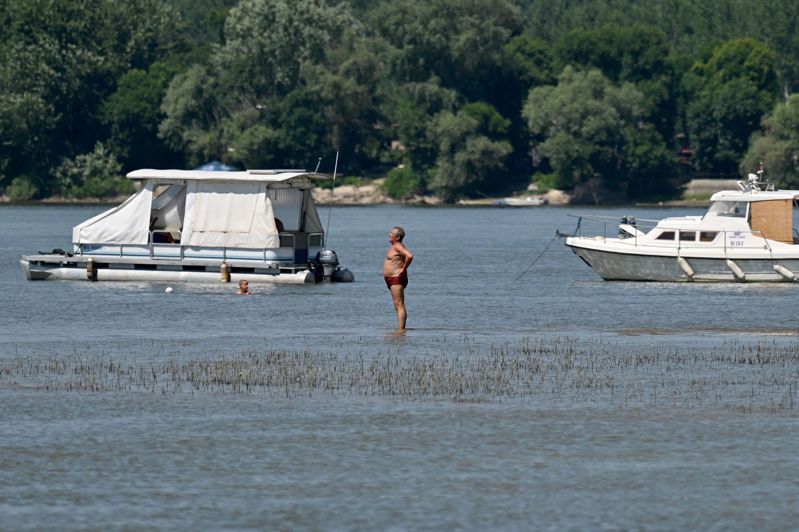紐時賞析/氣候變遷化雪為雨 山區風險升高

Climate Change Can Turn Snow Into Rain, Raising Risks in Mountain Zones
氣候變遷化雪為雨 山區風險升高
As the climate warms, mountain regions will get more extreme rainfall than previously thought, and more of the dangers that come with it, according to a study published in the journal Nature.
根據一份發表在《自然》期刊的研究,隨著氣候暖化,山區將出現比之前認為要更極端的降雨量,以及隨之而來的更多危險。
While scientists have studied how climate change may increase extreme precipitation overall, until now they hadn’t teased apart how much of the most extreme precipitation will fall as snow and how much as rain. The distinction is important because rain tends to produce more hazards for humans than snow does, including floods, landslides and soil erosion.
雖然科學家已經研究氣候變遷可能增加總體極端降水量,但直到現在,他們還沒有梳理清楚最極端的降水量中,有多少是降雪,多少是降雨。這種區別十分重要,因為比起雪,雨往往對人類造成更多危害,包括洪水、山崩跟土壤侵蝕。
As the planet heats up, snow is starting to turn into rain, even in the mountains. The study found that for every 1 degree Celsius that the planet warms, higher elevations can expect 15% more extreme rainfall.
隨著地球溫度上升,雪正開始變為雨,即使在山區亦然。這項研究發現,地球每變暖攝氏一度,較高海拔就可以預期增加15%的極端降雨量。
“This is the first time that it has ever been quantified,” said the study’s lead author, Mohammed Ombadi, an environmental data scientist at Lawrence Berkeley National Laboratory. This increase in extreme rainfall is “almost double” the increase in total extreme precipitation, including both rain and snow, that climate scientists previously expected. The precipitation finding applies only to the world’s highest regions, above approximately 2,000 meters of elevation.
研究主要作者、勞倫斯柏克萊國家實驗室環境資料科學家翁巴迪說,「這是第一次對此進行量化」。包括雨跟雪兩者在內,這種極端降雨量的增加,是氣候科學家先前預期的總極端降水量增加值「幾乎翻倍」。這項降水量調查結果僅適用於海拔約2000公尺以上的全世界最高區域。
But about one-quarter of the human population lives either in mountain regions or directly downstream from them, Ombadi said. While landslides don’t travel very far, flooding tends to affect people downstream more.
但翁巴迪說,約四分之一人口生活在山區或山區的直接下游。雖然山崩不會行進很遠,洪水影響下游民眾往往更嚴重。
In their study, Ombadi and his colleagues analyzed historical data from 1950 to 2019 as well as projections of climate change through the end of the 21st century. They focused on the temperate and Arctic regions of the Northern Hemisphere because data from the tropics and the Southern Hemisphere is lacking.
在他們的研究中,翁巴迪與他的同僚分析1950至2019年的歷史資料,以及直到21世紀末的氣候變遷預測。因為缺乏南半球與熱帶的資料,他們專注於北半球溫帶與北極地區。
As they modeled different global warming scenarios, the researchers found that extreme rainfall kept increasing steadily, at the same rate, for each degree of warming. “If you have 1 degree of warming, then that’s a 15% increase. If it’s 3 degrees, then that’s going to be a 45% increase in rainfall,” Ombadi explained.
當他們為不同的全球暖化情境建模,研究人員發現,每變暖一度,極端降雨量就按相同速率繼續穩定增加。翁巴迪解釋,「如果變暖一度,那就是增加15%。如果是三度,那麼降雨量將增加45%」。
This was a surprise, as the team expected the increase in rainfall to slow down and plateau as temperatures rose more and more. They used several different climate models, with relatively consistent results between all of them. “The big message is that every degree matters,” Ombadi said.
這是一個意外發現,因為團隊預期,隨著氣溫升得愈來愈高,降雨量的增加將放緩與穩定。他們使用幾種不同的氣候模型,而所有模型之間的結果相對一致。翁巴迪說,「重要的訊息是,每一度都重要」。
文/Delger Erdenesanaa 譯/周辰陽
延伸閱讀
贊助廣告
商品推薦
udn討論區
- 張貼文章或下標籤,不得有違法或侵害他人權益之言論,違者應自負法律責任。
- 對於明知不實或過度情緒謾罵之言論,經網友檢舉或本網站發現,聯合新聞網有權逕予刪除文章、停權或解除會員資格。不同意上述規範者,請勿張貼文章。
- 對於無意義、與本文無關、明知不實、謾罵之標籤,聯合新聞網有權逕予刪除標籤、停權或解除會員資格。不同意上述規範者,請勿下標籤。
- 凡「暱稱」涉及謾罵、髒話穢言、侵害他人權利,聯合新聞網有權逕予刪除發言文章、停權或解除會員資格。不同意上述規範者,請勿張貼文章。













FB留言